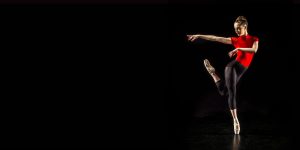What is dance in PE?
Many new teachers and parents wonder what is dance in PE. Unlike ‘traditional sporting activities’ dance offers a unique educational opportunity. It contributes to physical well-being whilst helping learners to develop a range of essential personal and social skills.
Dance in PE helps pupils to work as a group to create and display a piece of art. Therefore, it requires the application of research, analysis, planning and producing a final piece. Dance also facilitates a deep kinaesthetic learning experience.
At the later school education stages, PE offers a valuable contribution to GCSE and A-level subjects. It ignites an interest in dance at the earlier stages of education and can also pave a path to creativity and regarding future careers.

The wonders of dance in PE
Through incorporating dance into the curriculum, schools can actively contribute to learners acquiring cultural capital. Dance takes PE beyond a ream of pure physical activity. It requires studying, observing, analysis, planning and creating an artistic movement piece in collaboration with fellow pupils.
To develop visual stimulus and to ignite students imagination, a visit to a stage performance is highly recommended. Alternatively, the school can invite a specialist dance workshop provider. Some workshops also offer professional development sessions for teachers that help to teach about the best practice of incorporating dance in to PE.
According to the National Dance Teacher’s Association:
‘Dance makes a distinctive contribution to the education of all children in that it uses the most fundamental mode of human expression – movement. Through its use of non-verbal communication, children can participate in a way that differs from any other area of learning. It provides aesthetic and cultural education, opportunities for personal expression, and it also introduces students to a wealth of traditional, social and theatrical forms. In a broad and balanced curriculum, this important area of human experience should not be neglected.’
Dance as a multi-dimensional concept in the curriculum
To incorporate dance in PE means to include an explanation of a movement framework. Skilful educators take dance beyond simple repetition. Through Dance in PE, pupils can explore nature, or contemporary social issues and development. The key is to help learners’ to identify, collect and assemble movement elements that, just like a painting, form a unique physical art piece.
The initial explanation also helps students to study traditional dances such as folk, social and ballroom. Students can use these pieces of dance to create their unique dances to explore personal and broader social issue variety of contexts. Folk dances routed in traditional cultures can aid exploration of learners’ heritage and individual identity.
Social dances represent music, songs and general culture of a particular period in time. A teacher can link social dance and history topics to enable learners to immerse in the culture and experience of particular historical times. The initial dance ensures help to students studying the importance of non-verbal communication determined by the body, space, and relations. In that, the dance also offers an opportunity for deep kinesthetic learning.
Dance in PE as part of GCSEs
Dance is a valuable option in the future academic plans as it features in both GCSE and A-level PE exams.
At GCSE level candidates can choose dance as one of three choices in the non-exam assessment (NEA) element of the syllabus. Dance option exists as a team or as a single practical performance activity. Notably, the non-exam assessment accounts for 30% of the total marks in the AQA and Edexcel (team sport only) syllabus; 40% of the total marks in the OCR syllabus.
Similar to GCSE, dance is one of the options on the A level PE AQA and OCR syllabuses. Furthermore, it offers practical opportunities for young people to engage in creative supplementary work which will help to develop a range of employability skills. Skills such as personal organisation, teamwork and leadership will help to build professional confidence and CV that will help them stand from the crowds.

Dance in PE as part of A-level
Similar to GCSE, dance is one of the options on the A level PE in AQA and OCR syllabus. Furthermore, it offers practical opportunities for young people to engage in creative supplementary work as dance teacher and coaches. Such professional positions help to develop a range of employability skills. Skills such as personal organisation, teamwork and leadership will help to build professional confidence. Moreover, these skills help to create a CV that will help them stand from the crows.

Dance as a career pursuit
Yes, dance can be a career from a dance in music and theatrical productions to dance school headteacher and owners. The demand for dance in society offers a range of opportunities. Dance is relevant to young person is interested in building their own business or in develop a dance-related career

